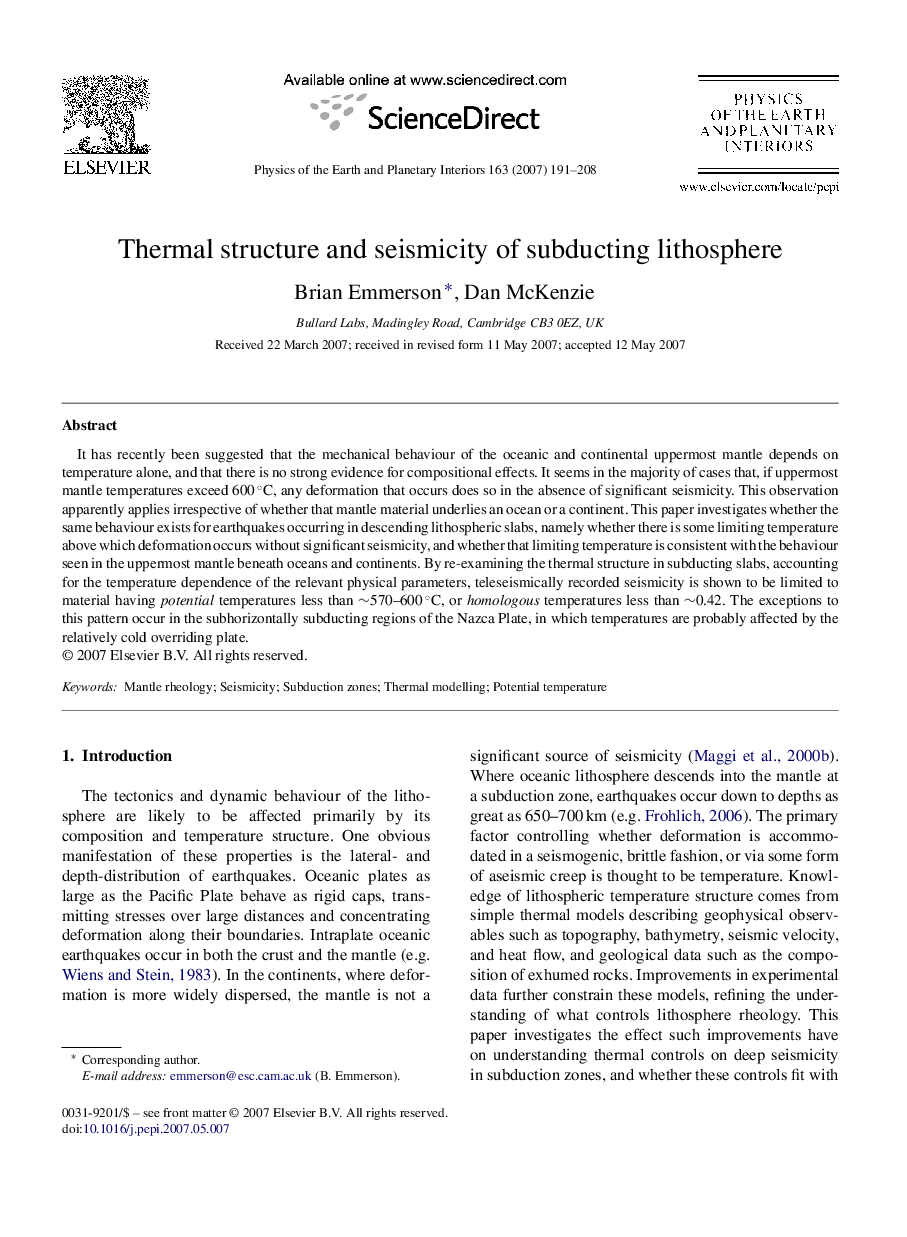| Article ID | Journal | Published Year | Pages | File Type |
|---|---|---|---|---|
| 4742850 | Physics of the Earth and Planetary Interiors | 2007 | 18 Pages |
Abstract
It has recently been suggested that the mechanical behaviour of the oceanic and continental uppermost mantle depends on temperature alone, and that there is no strong evidence for compositional effects. It seems in the majority of cases that, if uppermost mantle temperatures exceed 600 °C, any deformation that occurs does so in the absence of significant seismicity. This observation apparently applies irrespective of whether that mantle material underlies an ocean or a continent. This paper investigates whether the same behaviour exists for earthquakes occurring in descending lithospheric slabs, namely whether there is some limiting temperature above which deformation occurs without significant seismicity, and whether that limiting temperature is consistent with the behaviour seen in the uppermost mantle beneath oceans and continents. By re-examining the thermal structure in subducting slabs, accounting for the temperature dependence of the relevant physical parameters, teleseismically recorded seismicity is shown to be limited to material having potential temperatures less than â¼570-600 °C, or homologous temperatures less than â¼0.42. The exceptions to this pattern occur in the subhorizontally subducting regions of the Nazca Plate, in which temperatures are probably affected by the relatively cold overriding plate.
Related Topics
Physical Sciences and Engineering
Earth and Planetary Sciences
Geophysics
Authors
Brian Emmerson, Dan McKenzie,
